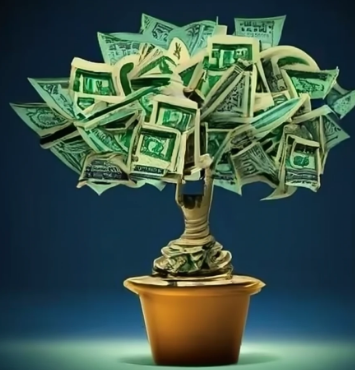Forex First Trade In Forex History 1914 | Forex First Trade in History A Groundbreaking Moment in Currency Trading

Forex First Trade In Forex in the Forex Market:
Forex First Trade In Forex, a giant in global finance. Nowadays, trillions of dollars change hands every day. But it wasn’t always like this. The roots of forex trading go back to ancient times. Still, the first modern didn’t happen until much later. This article explores the captivating history of forex trading, pointing out key events that led to that first trade and how the market grew into what it is today.
The Ancient Roots of Currency ExchangeCurrency exchange is super old—almost as old as civilization itself! Long ago, places like Egypt, Greece, and Rome had systems to help trade among various regions. They each used their own kind of money. Back then, people mostly bartered goods directly. But as time moved on, they started using coins made from precious metals like gold & silver. These early currencies made it easier to trade and set the stage for more advanced trading systems later on.
As the Roman Empire grew, currency trading began to look more organized. They introduced coins for goods & services—a big step up! With their empire spreading far & wide, different regional currencies needed exchanging. This is when money changers entered the scene to help with those trades.
The Birth of Modern Banking and Forex First Trade In Forex let’s jump to the Middle Ages! Banking systems started popping up in Europe. Italian merchants in places like Venice and Florence were pioneers in what we think of as modern banking today. These banks made it better for merchants to swap currencies, leading to a more official foreign exchange idea.
One prominent player was the Medici family from Florence. They took things further by opening banks all over Europe & introducing letters of credit along with bills of exchange. That way, merchants could trade beyond borders without needing tons of cash physically. This was key for making forex a reality.
But even at this time, currency trading was still pretty local and unstructured. As global trade boomed during exploration & colonization, folks realized they needed something more formal and organized.
The Gold Standard and the Evolution of ForexEntering the 19th century brought about the Gold Standard—a system that tied a country’s currency to gold’s value. This made exchanging currencies simpler since everyone knew what they were worth compared to gold. If one currency was worth a certain amount of gold while another was worth double that—easy peasy!
But even though the Gold Standard hung around for most of the 19th & early 20th centuries—things changed during World War I in 1914. It messed up global trade, making it hard for countries to keep their gold reserves intact. So they hit pause on using it during the war.
Afterward, there were attempts to restart it—but with economic struggles and then the Great Depression hitting in the ’30s? It just didn’t work out! The Gold Standard’s failure opened a door to new kinds of currency trading.
The Bretton Woods Agreement and the First Official Forex TradeAfter World War II wrapped up, around 1944 came the Bretton Woods Agreement—it reshaped international money systems altogether! The U.S. dollar became everyone’s go-to reserve currency while other currencies were pegged to it at fixed rates—like $35 an ounce for gold.
This was huge for forex trading; fixed exchange rates were here, which kept international trade rolling smoothly for years ahead! Yet by the ’70s, folks saw cracks in this system; it wasn’t holding up anymore.
In 1971, President Nixon declared that the U.S dollar wouldn’t convert back into gold anymore—that moment ended Bretton Woods as we knew it! That’s when floating exchange rates kicked in—the values would now sway based on supply & demand instead of being fixed!
With Bretton Woods gone, modern forex was born! For the very first time ever! Currencies could be traded freely on open markets with values set by market forces—what an era!
The First Official Forex TradeSo when did this pivotal moment happen? Well, that first official forex trade took place in those early ’70s right after Bretton Woods fell apart. It all went down on an interbank market where banks & big companies exchanged currencies to help their international deals along.
Now nobody can say exactly what that first trade looked like—but people think it involved swapping U.S dollars & British pounds since these were popular back then! This marked just one more step into new global finance terrain where market forces decided currency prices—not government rules!
The Growth of the Forex MarketAfter that initial trade? The forex market took off like a rocket ship! More countries ditched fixed rates for these new floating ones which drove demand for currency trading way up! By the ’80s? It grew even bigger—banks welcomed individual traders & investors into this world!
Technological innovation helped too! Computers changed everything in trading during those ’80s and ’90s—allowing traders to execute deals & track rates instantly! Trading volumes soared high—by now? We’re talking about daily volumes hitting over $6 trillion globally!
The Forex Market TodayToday? The forex market’s bustling away around-the-clock—five days a week! Major cities like London, New York City, Tokyo and Sydney keep things lively with lots of players joining in: banks, hedge funds—you name it—even everyday traders have a seat at this table now!
Since that first trade back in those early ’70s? Look how far we’ve come! From a small operation focused only on trading internationally—to becoming this vast financial system vital to today’s economy!
History teaches us fascinating tales about how things began—from ancient trades through that groundbreaking official moment and into our advanced money world now—a journey across centuries that’s still shaping our lives today well into tomorrow!
